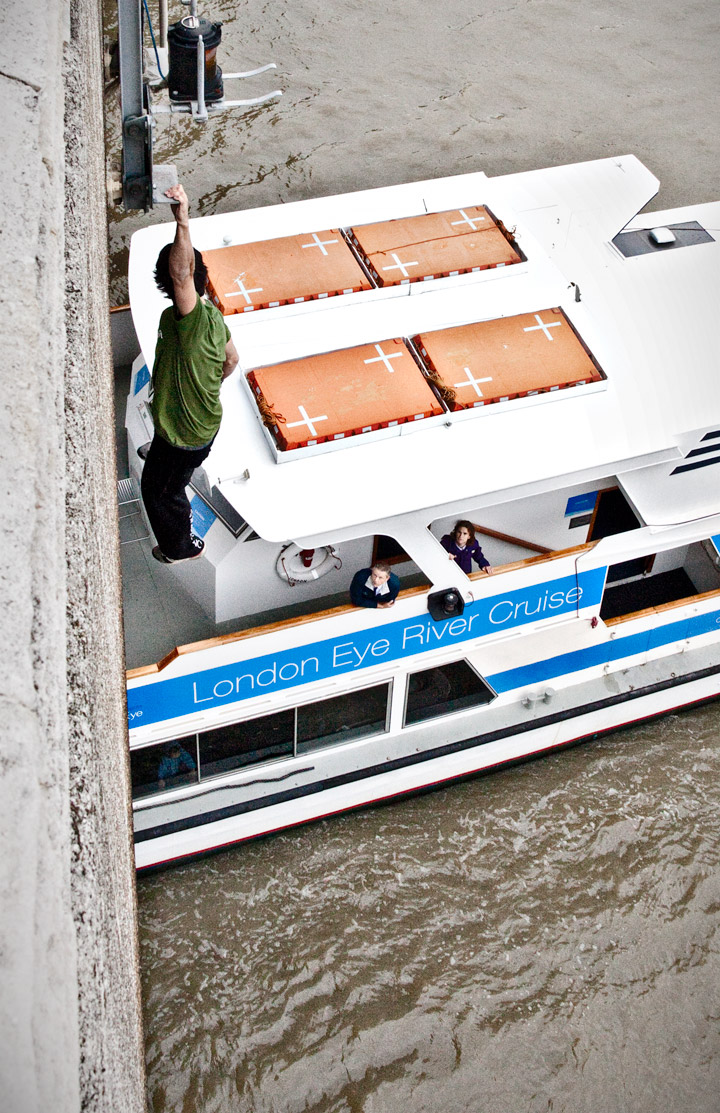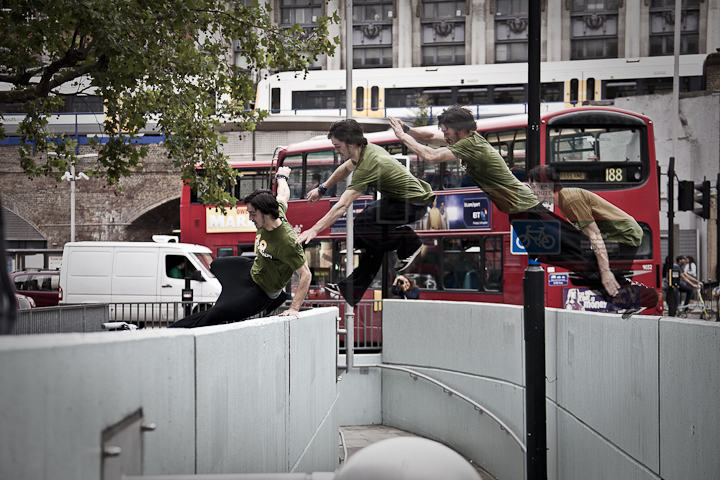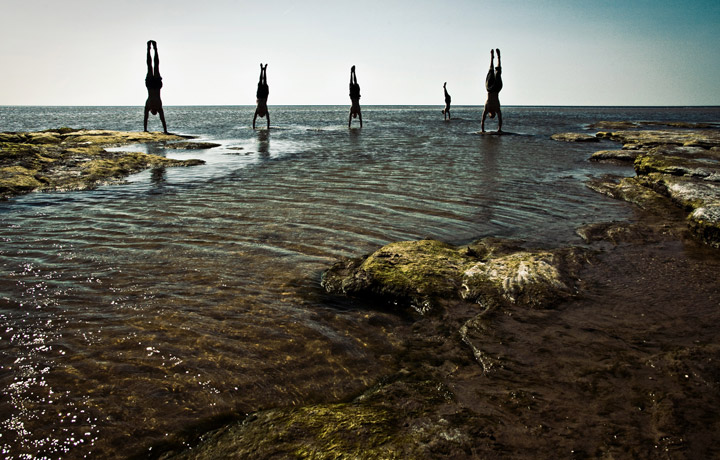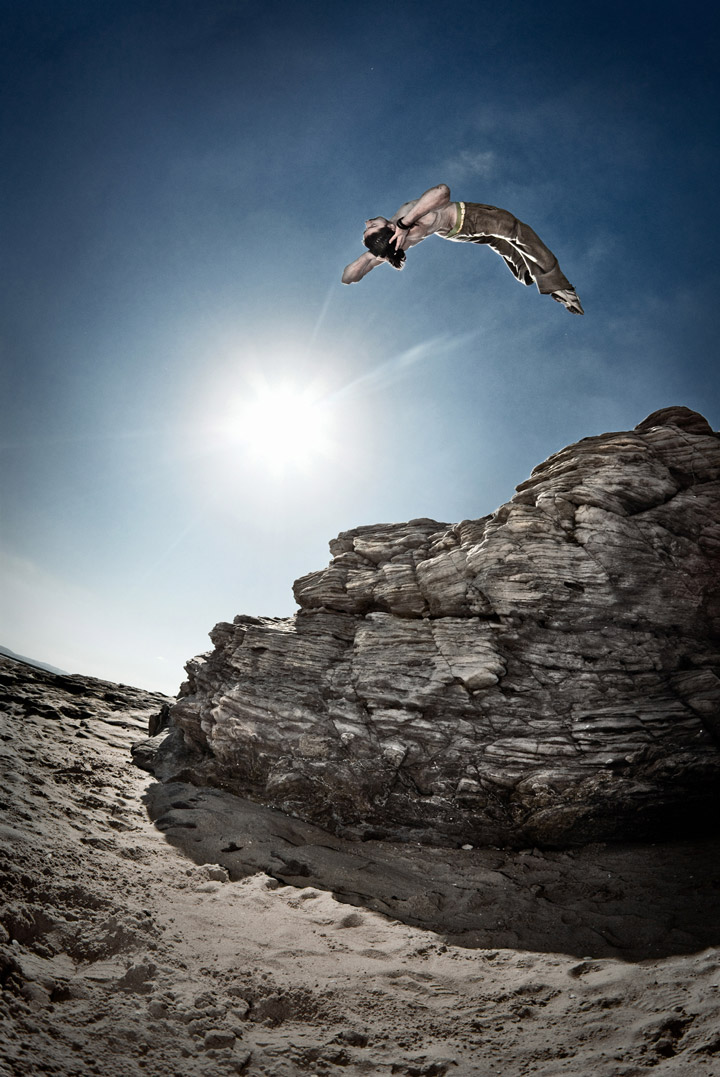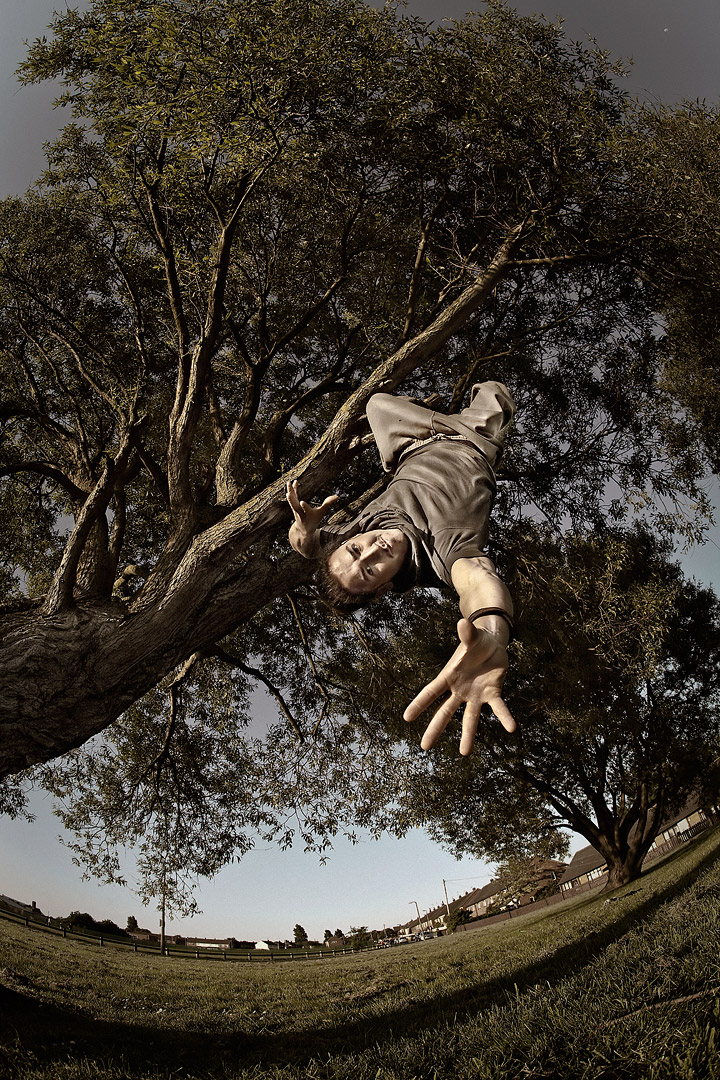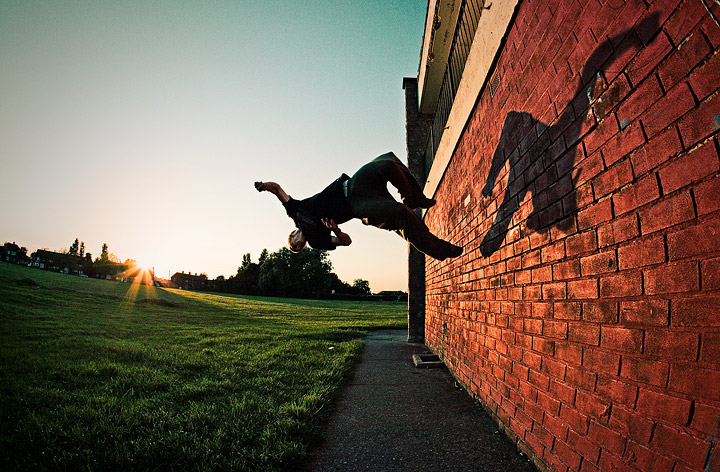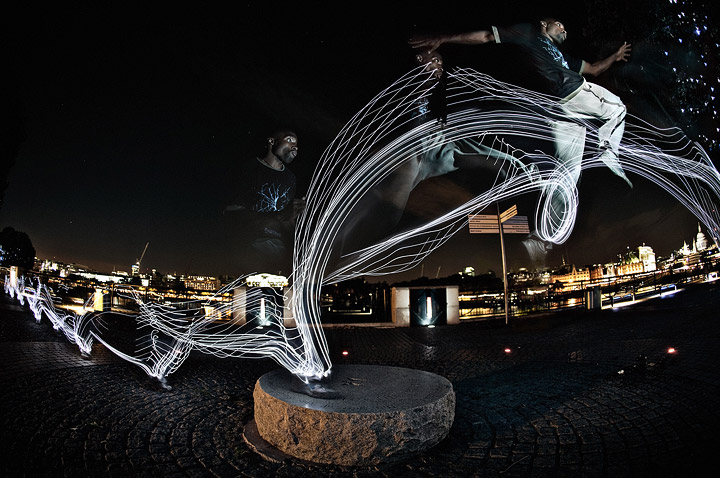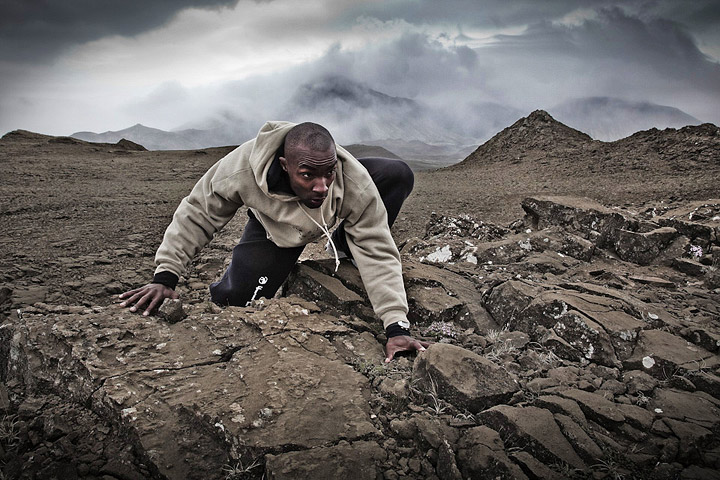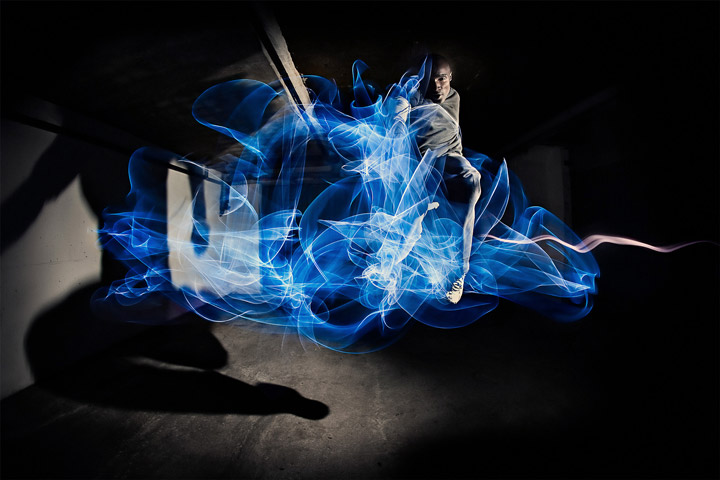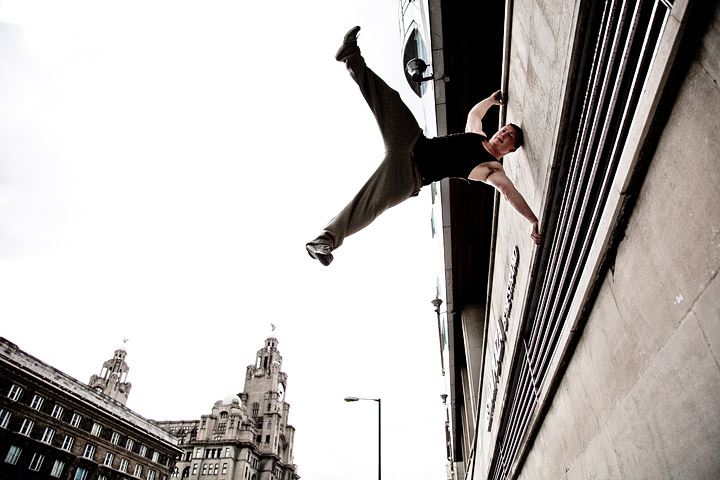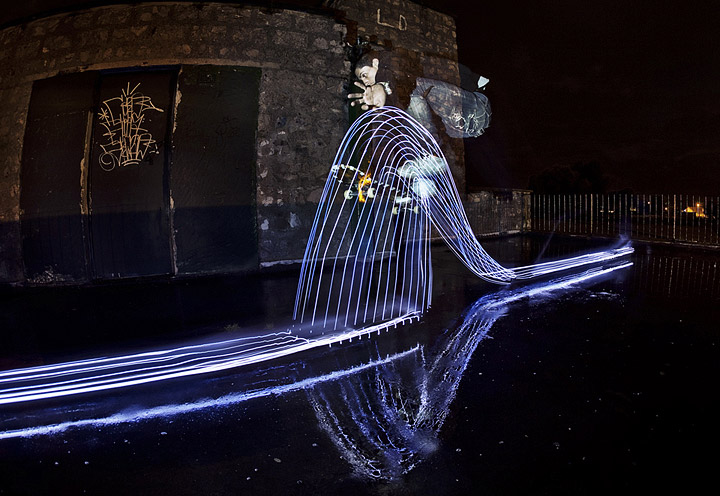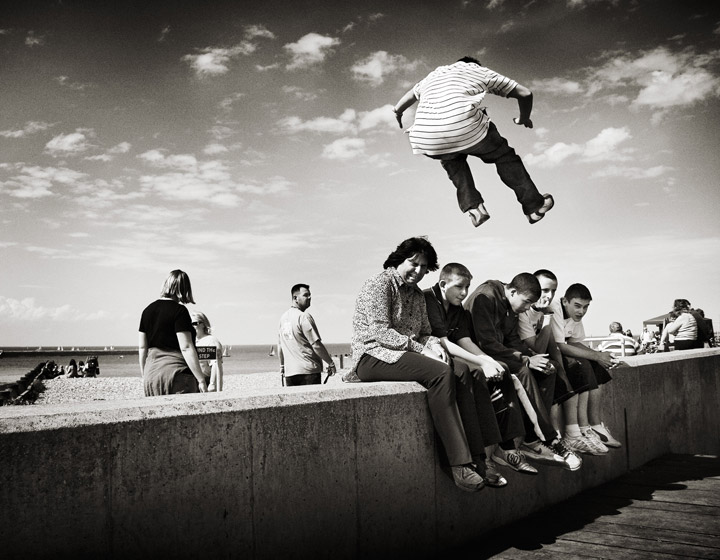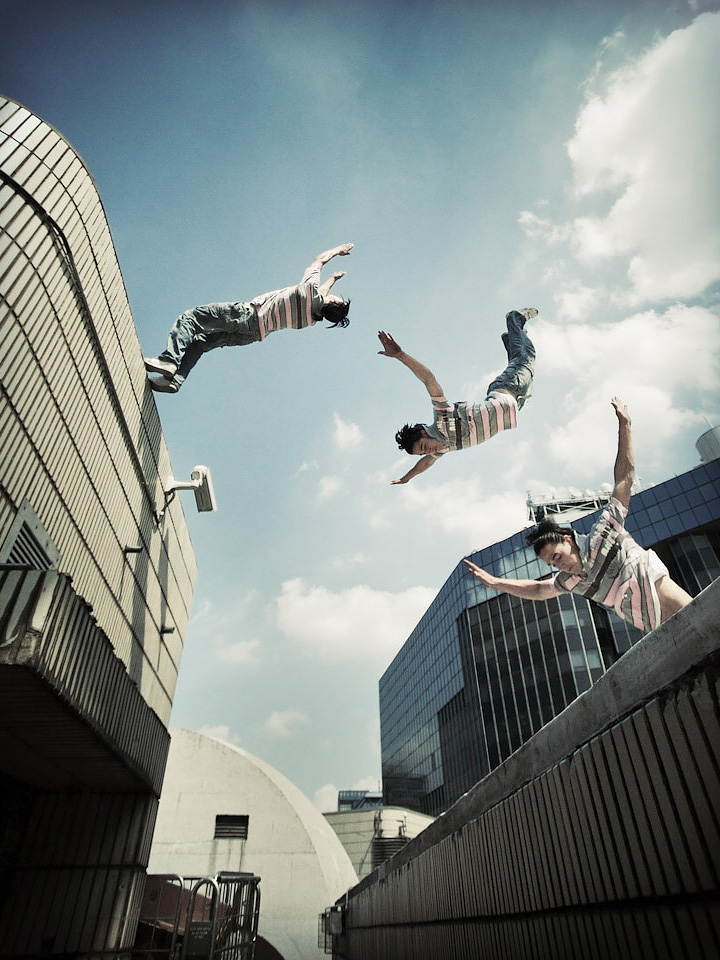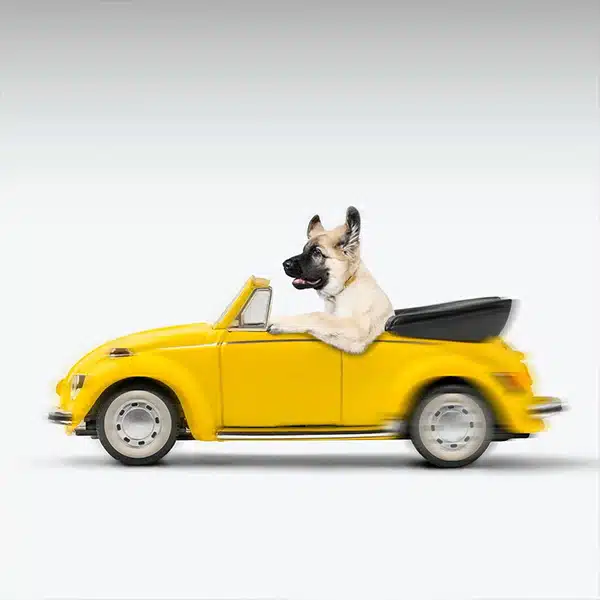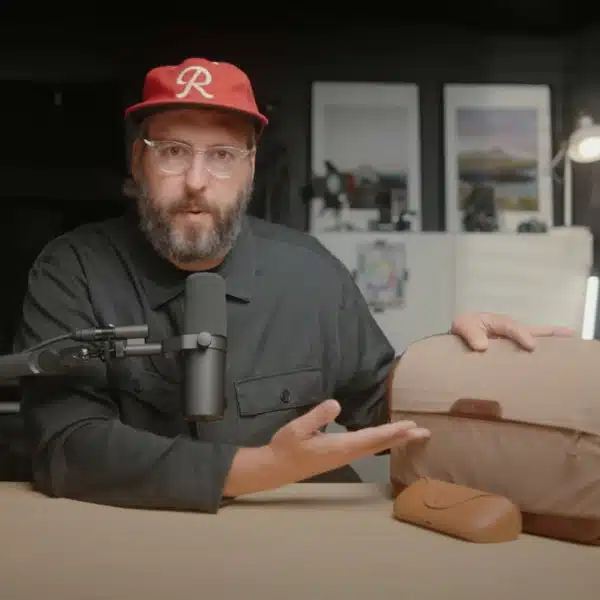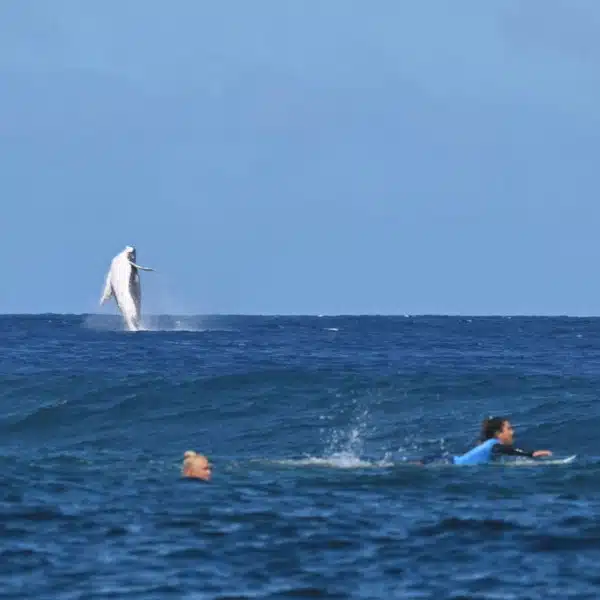Parkour is a global urban movement that has taken over the internet by storm. Incredibly acrobatic people from all over the world push their bodies to the limit, jumping up walls and off rooftops. Their goal is to move from one point to another as quickly and efficiently as possible. Through these fluid movements, this special group has created an art form. Although they are fearless and superhuman, they are also graceful and skilled. Parkour was created in France by David Belle, Sbastien Foucan, and the founding members of the Yamakasi. It is inspired by “the natural method of physical education” by Georges Hbert who first saw this art form performed by Africans in Congo. Now, it has spread worldwide by films, television reports, and amateur videos on the Internet. London-based photographer Jonathan Lucas captures the best Parkour shots I've ever seen. The way he is able to freeze time and capture the action is unbelievably amazing. Once I saw his photos, I knew I had to get in touch with him. He was gracious enough to send over these images along with the answers to some of my questions. Check out the interview below.
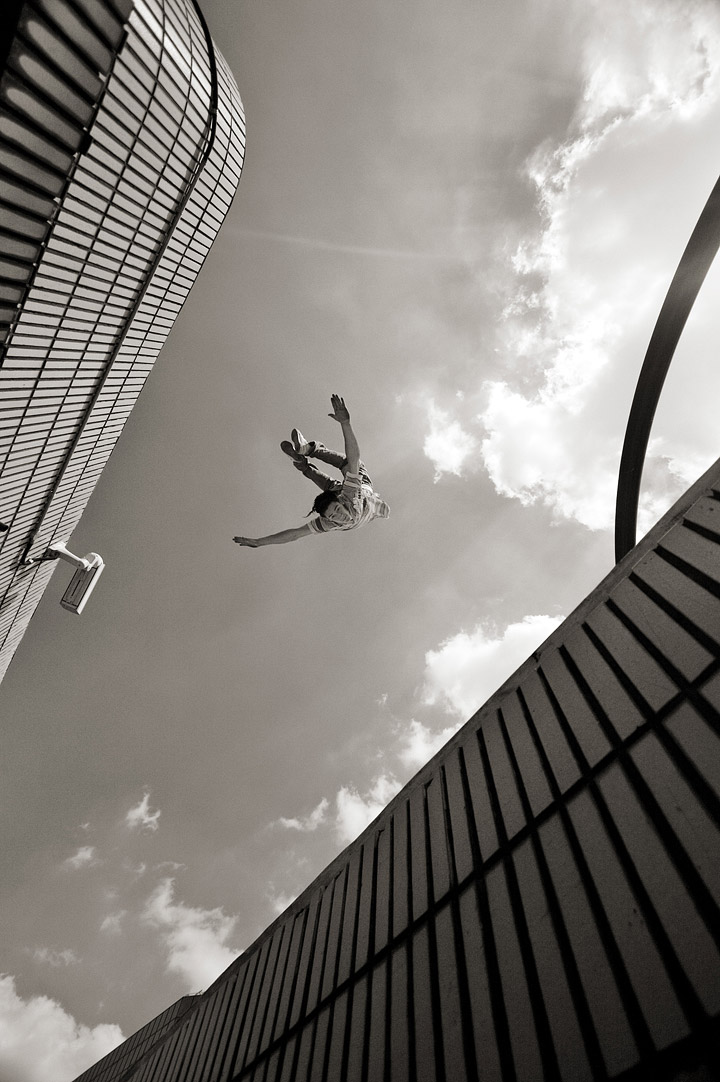
Where are you from. Can you give us a brief description of yourself? I'm a designer, illustrator and photographer, born in North London. I was a skateboarder when the craze first hit these shores from the States and I've had an affinity with the South Bank ever since. That's where we'd spend most of our weekends. I love the outdoors, putting myself in strange situations and I'm a lover of our planet. (I don't like the term environmentalist because to be the opposite requires one to be an environmental vandal.) I'm not an extremist either – I'm too involuntarily hypocritical for that – but I simply try to find ways to look after our long-term home and not turn a blind eye to activity that threatens sustainability both for mankind and the natural world. Sorry to start with a rant, but the insatiable nature of mankind's demands on resources means that this comes to the top of the agenda for me. I'm based in Shoreditch, East London. I was here before it was cool and have witnessed massive changes. London offers pretty much everything one could hope for, not withstanding the huge contrasts in fortune and cultures. Like many big cities one can wander from opulent luxury to destitution in a few steps. It makes photography a fascinating pursuit. They say that, in London, you're never more than 30 feet from a rat. Judging by some types of people I see in the West End strolling past loaded with shopping bags in insular, self-obsession, I think that may well be true!
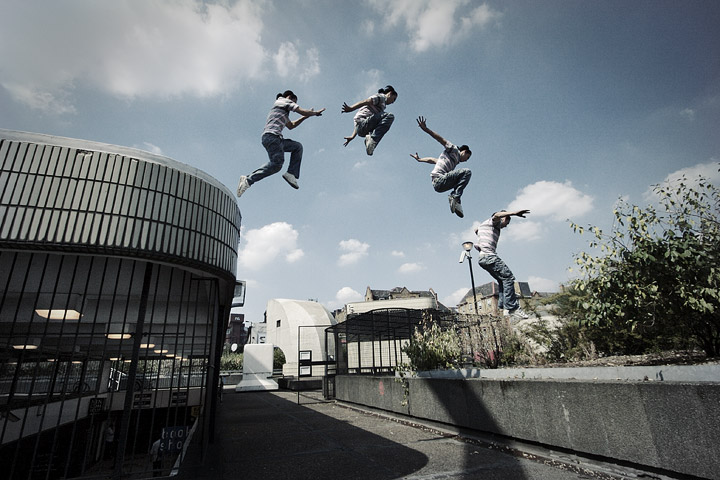
You take some amazing action shots. What's the hardest part about it? Thanks for the compliment. The toughest physical aspects of making a good shot are: location; angle; timing and light. Sounds obvious doesn't it? Like landscape photography light and shadows can play an important role in making an image ‘pop'. However, where these factors are missing (which in Britain can be frequently) I must call on other factors to help deliver what I want. On dull days, shapes, drama and composition play an even more important role in the image. As with the five senses, when one of them weakens another becomes increasingly heightened to compensate. I've long been driven by the desire to show the movement of flow of parkour and freeunning (there is a difference) in a less conventional way. Consequently I sourced some LED lights which I attached (sometimes awkwardly) to my subjects and shot them using long exposures to exploit the essence of the move, literally painting where they started and finished. This has its challenges but has yielded some exciting results. Of course, being a perfectionist, I feel I have yet to produce my best work using this technique and my biggest enemy has been time. I achieved some satisfying results when recently shooting in france and London with freerunning pioneer, Sbastien Foucan [see link: http://bit.ly/gsdmt0] but I need to concentrate on this to get what I want out of it. Of course, perhaps more important than locations is finding the right subject who who understands what I'm trying to achieve. Daniel Ilabaca is a prime example of a traceur with the creative understanding to help me achieve my goals. There are others too, including Ben ‘Jenx' Jenkin, Tim ‘Livewire' Shieff and US parkour/skating crossover athlete, William Spencer. The latter is a remarkable person – utterly fearless and up for almost any challenge. The short time I spent shooting with him left me yearning for much more. His abilities are extraordinary. I have to mention that a nicer bunch of guys it is difficult to meet – they're hilarious and just superb subjects, always willing to try something new or challenging.
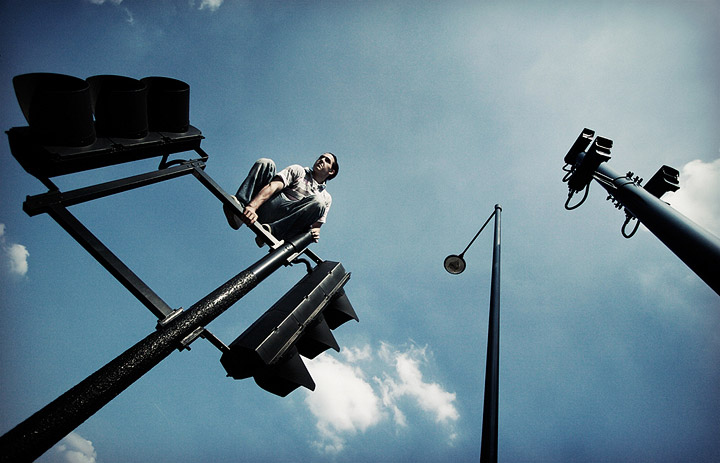
How many people are involved in Parkour? Do you do stunts as well? Parkour and freerunning are now global movements (calling it a sport does not do justice to what is sometimes an art-form and way of life). It's free, so anyone can do it. Often people walk this earth full of inhibition and mental constraints on their physical exploration of it. Parkour is a forgotten, logical, primeval skill waiting to be rediscovered and fine-tuned. It's an investment too, teaching its exponents about the world around them – and about the human beings with whom they share the environment, urban or otherwise. There are many thousands of people involved and it is growing all the time. I'd like to say that I do stunts too, but I'm behind the lens, not in front of it (for good reason too). Parkour is infectious though – it's tough not to try it once you witness the techniques and the seeming simplicity and grace exhibited. Let's just say that I don't do gates any more – or garden fences!
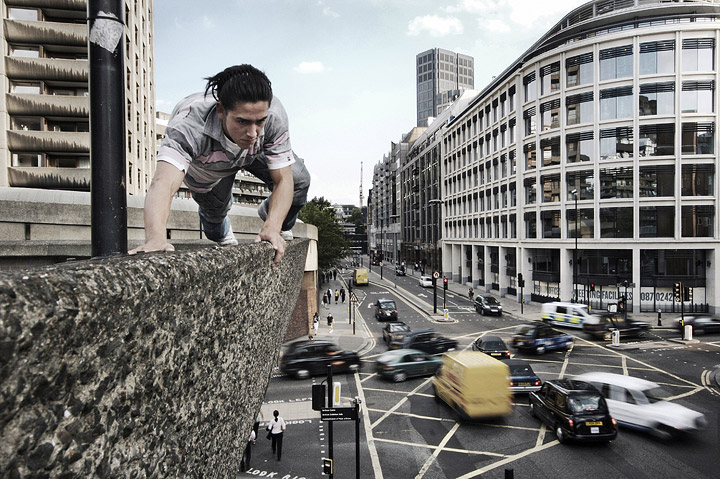
How often do people get hurt? Like any activity that requires contact with hard or rough surfaces, people do get injured. It's inevitable. Some have indeed died through misadventure and, perhaps, a false degree of confidence that their skills can make them invincible. It all boils down to self-assessment, practice and being sensible with any risks. All ‘professional' traceurs train relentlessly in gyms and on the ground before venturing upwards and into uncompromising situations. They don't want to die or get injured. Like sports people, for them an injury means time-out from the activity they love and thrive on, so it pays to stay safe. Of course, taking risks is part of the challenge too and brings inner strength, so a balance has to be struck.
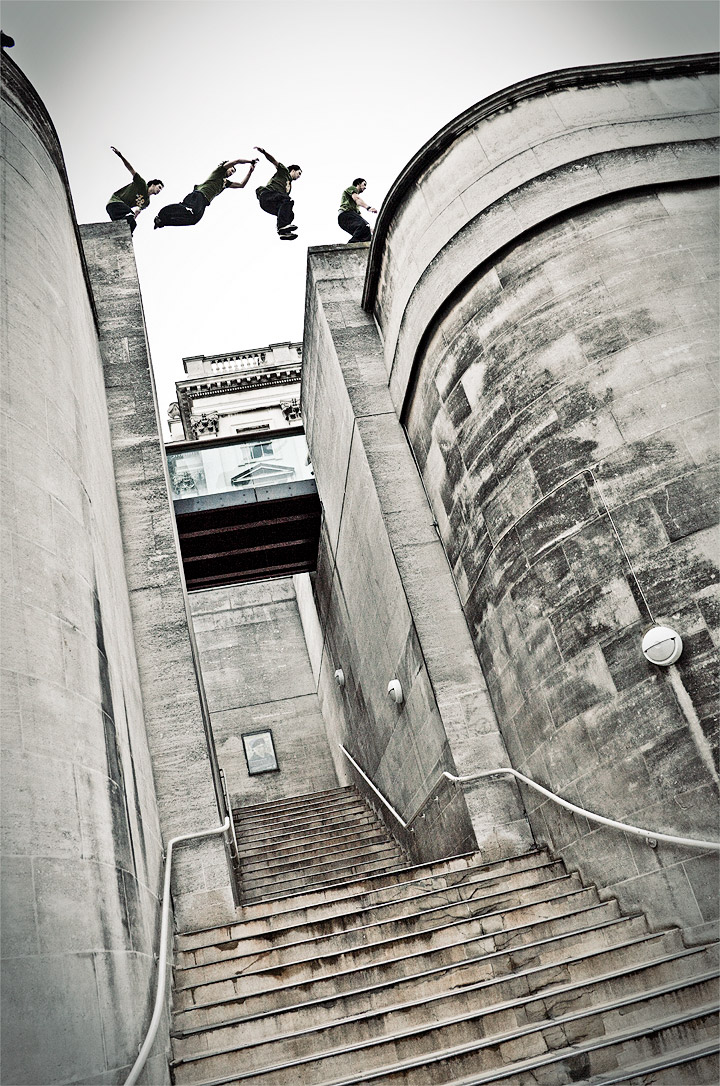
What's your favorite part about this project? By project, I assume you mean the activity of shooting urban movement? I think much of my pleasure comes from meeting people who have changed my outlook on life. A great many people may believe that the (mostly) young people who do this are up to no good. The opposite is true. They're fantastic individuals – many of whom don't even realise how special they are. I love being able to portray freerunning in a way that makes people stand and stare – to ask questions, and perhaps to question their perceptions. Architecture has also been exposed to possess dual functionality, unforeseen by the architect. I like to show how, in the future, architects could one day design their buildings to permit this activity rather than just to contain business people, and security guards to usher away those who utilise the three dimensional forms occupying our space. For the artist in me, it will always be a work in progress, as unfinished as the transforming landscapes in which we are inexorably immersed.
